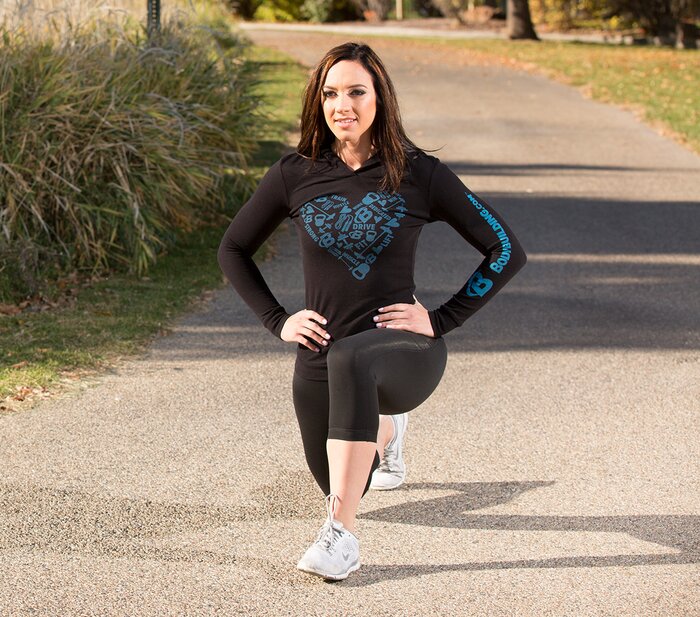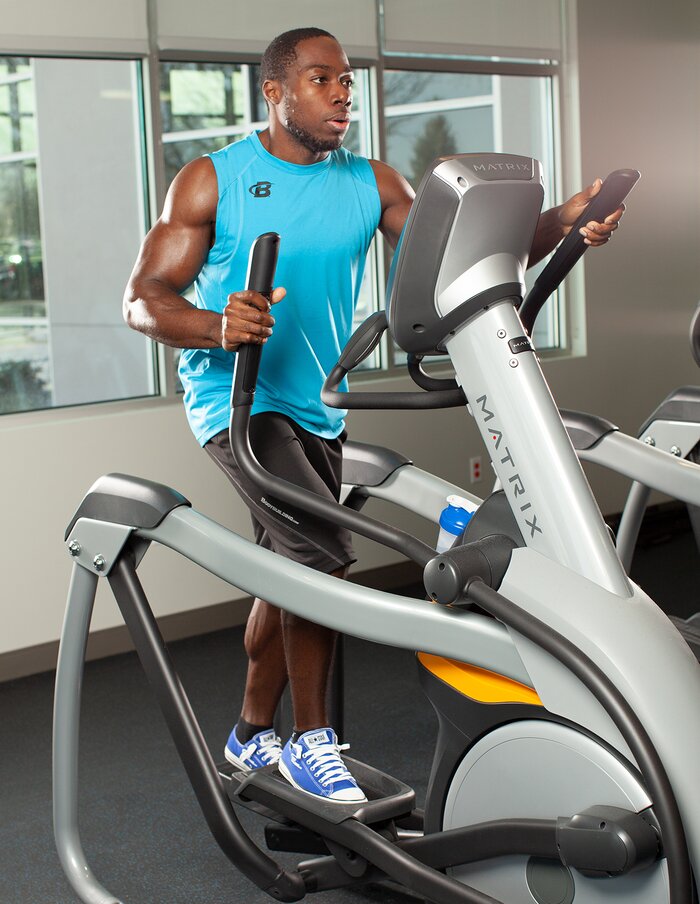Almost 10 percent of Americans (almost 33 million people) will be diagnosed with knee osteoarthritis by the time they reach 60 years of age. Among certain demographics, like overweight or obese women, this rate is almost 25 percent![1]
But regardless of demographics, one thing is true: Once you start getting knee pains, it can be hard to get rid of them. For many, the only "treatment" they see as helpful becomes complete joint replacement somewhere down the line.
Make no mistake: You have more options than just gritting it out and waiting for the day you can go under the knife! But they will involve taking stock of what you're doing, and perhaps not doing, in the gym and making some strategic changes.
"It's pretty well agreed on that if you have trauma to your knee, you're going to start having degenerative changes," says Paul LaBounty, Ph.D., a physical therapist and associate professor of exercise science at the University of Mary Hardin-Baylor in Texas. "That trauma could be the result of a past injury or surgery, as well as from being overweight or obese."

The nasty thing about any pain in our legs or feet, LaBounty says, is that it sets up a vicious circle: "If you have pain, you move less, and because the cartilage receives its fluid by moving around, the less you move, the more the pain goes up, and the more the pain goes up, the less you move."
Looking to avoid this all-too-common loop? Here's LaBounty's three-step plan.
1. Follow the Two-Hour Rule
It's a common situation: Someone starts training with the goal of warding off knee pain, but their workouts make their knees hurt. So they stop training altogether, or limit themselves to the upper body.
LaBounty advises not to let this short-term soreness convince you to make any drastic long-term decisions. Instead, he recommends evaluating workouts according to what he calls the two-hour rule.
"The two-hour rule basically says that you should expect to be more irritated and inflamed during and after exercise," LaBounty explains. "Expect a bump in pain immediately after exercising, but if it's still painful two hours later, evaluate what you did that may have aggravated it, or back off a little during your next workout.
"If you are experiencing joint degeneration, moving the knee during exercise may hurt. For some people, there's no way around this. The pain shouldn't be so bad, though, that it lays you up or has you grimacing in pain for hours after your workout."
Want help auditing your workout for knee-aggravating exercises and training modalities? Unstoppable: The Ultimate Guide to Training Through Injury can help. This unique resource includes an in-depth guide to training around knee pain and a knee-friendly workout created by movement specialist John Rusin, Ph.D.
2. Don't Neglect Your Hammies and Hips
Because everyone's circumstances and anatomy are different, LaBounty says specific exercise prescriptions should be based on your age, your goals, and your symptoms. He suggests talking to your doctor or physical therapist to develop an exercise routine that matches your physical capacity.

Common knee-friendly cardio exercises for knee pain include using the elliptical machine, riding a bike, or heading to the pool.
"You can do a lot of really good exercises unweighted in the pool," LaBounty says. "Swimming is just the start of what's possible. This is particularly true if a lack of balance or pain while walking prevents you from getting exercise. When you exercise in the pool, you don't have to worry about falling down."
If you're someone who enjoys riding bikes, great! But if you have knee pain, it's probably not a good idea to rely entirely on this one quadriceps-focused exercise for your activity. LaBounty emphasizes the importance of a well-balanced lower-body routine that strengthens your legs from all angles and helps stabilize the knee joint.
"Have a balance of knee extensors, flexors, and hip abduction and adduction," he advises. "All of these muscle groups contribute to a well-functioning knee joint. Most people are quad-dominant and neglect their hamstrings, which can have negative implications for knee health. You need both muscle groups to be as strong as possible."
3. If You're Going to Run, Focus on Running Better
If there's one athletic community that seems to struggle the most with knee pain, it's runners. For this reason, it would be easy to simply tell runners experiencing joint pain to stop doing what they love, but LaBounty knows it's not as simple as that. So he first emphasizes learning to do it in a more knee-friendly way.
"I don't suggest a lot of jogging for the average person with knee issues, unless they really like to run and are going to do it no matter what I tell them," LaBounty says. "So here's my advice: If you're going to run, work on learning to run with the forefoot or midfoot style of running seen more in sprinting, rather than using the typical heel strike. The forefoot style offers more of a piston-like effect that reduces impact on the knee joints."
If that doesn't work, consider taking a break from running for at least 2-3 months, and using that time to strengthen your knees and the muscles that support them. A formula like three full-body resistance training workouts per week, plus another three low-impact cardio sessions like swimming or an elliptical trainer, could be just what you need to be able to run again pain-free.

No matter what form of exercise you do, remember that proper form can reduce improper or altered loading, thereby reducing the risk of further injury. If you're not sure what good form is, work with a trainer or physical therapist to get it right.
Think pain is an unavoidable part of your future? Think again. Unstoppable: The Ultimate Guide to Training Through Injury can help you evaluate what you're doing now that is contributing to knee, back, and shoulder pain, and find better alternatives that will allow you to stay active!
*These statements have not been evaluated by the Food and Drug Administration. This product is not intended to diagnose, treat, cure, or prevent any disease.
References
- Losina, E., Weinstein, A. M., Reichmann, W. M., Burbine, S. A., Solomon, D. H., Daigle, M. E., ... & Jordan, J. M. (2013). Lifetime risk and age at diagnosis of symptomatic knee osteoarthritis in the US. Arthritis Care & Research, 65(5), 703-711.
- Wallace, I. J., Worthington, S., Felson, D. T., Jurmain, R. D., Wren, K. T., Maijanen, H., ... & Lieberman, D. E. (2017). Knee osteoarthritis has doubled in prevalence since the mid-20th century. Proceedings of the National Academy of Sciences, 114(35), 9332-9336.

